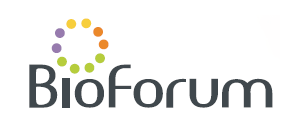LIBS-MLIF for isotopic shift analysis
Michael Gaft, Department of Physics, Ariel University, Ariel, Israel (michaelga@ariel.ac.il)
Lev Nagli, Department Of Physics, Ariel University, Ariel, Israel
Atomic and ionic LIBS is unsuitable for isotope identification because of tiny isotopic shifts. The approach named LAMIS (Laser Ablation Molecular Isotopic Spectrometry), introduced by Russo et al., represents one of the most exciting explorations of molecular LIBS. It uses relatively large isotope shifts in spectra of transient molecular isotopologues formed in laser ablation plasma. The real-time stand-off analysis by LAMIS can provide valuable isotopic information for many practical applications such as nuclear non-proliferation monitoring and forensics, geochemistry, archaeology, and biochemistry. Many challenges of atomic isotope analysis are surpassed by measuring significant isotopic shifts of vibronic emission bands of isotope molecules [1]. The second step in molecular isotopic shift analysis was combining LIBS with Molecular Laser-Induced Fluorescence (LIBS-MLIF) [2]. Laser-induced plasma (LIP) is a reservoir of molecules resonantly excited by a UV or VIS laser from their lower energy states. An advantage of resonance excitation of molecular fluorescence is that a very short gate width, comparable with a pumping laser pulse duration (usually of a few ns), can acquire vibrational and rotational emission spectra connected only to a specific excited level and significantly reduces spectral interferences from other chemical species, which is essential when analyzing plasma chemical reactions. The molecular isotope splitting is increasing as the quantum numbers ν, and ǀΔνǀ increase [3]. LIBS-MLIF enables to detect such electronic transitions, while they are not detected in LAMIS.
References
1. R. E. Russo, A. Bol'shakov, X. Mao, C. McKay, D. Perry, O. Sorkhabi. Laser ablation molecular isotopic spectrometry (LAMIS), Spectrochim. Acta B 66 (2011) 99–104.
2. L. Nagli, M. Gaft. Combining Laser-Induced Breakdown spectroscopy with Molecular Laser-Induced Fluorescence. Applied Spectroscopy 70(2016)1-8.
3. S. S. Harilal, B. E. Brumfield, N. L. LaHaye, K. C. Hartig, M. C. Phillips. Optical spectroscopy of laser-produced plasmas for standoff isotopic analysis. Appl Phys Rev 5(2018).
Organized & Produced by:

POB 4043, Ness Ziona 70400, Israel
Tel.: +972-8-9313070, Fax: +972-8-9313071
Site: www.bioforum.org.il,
E-mail: hagit@bioforum.co.il